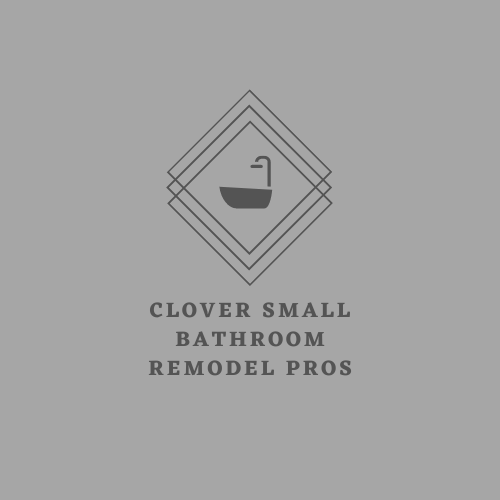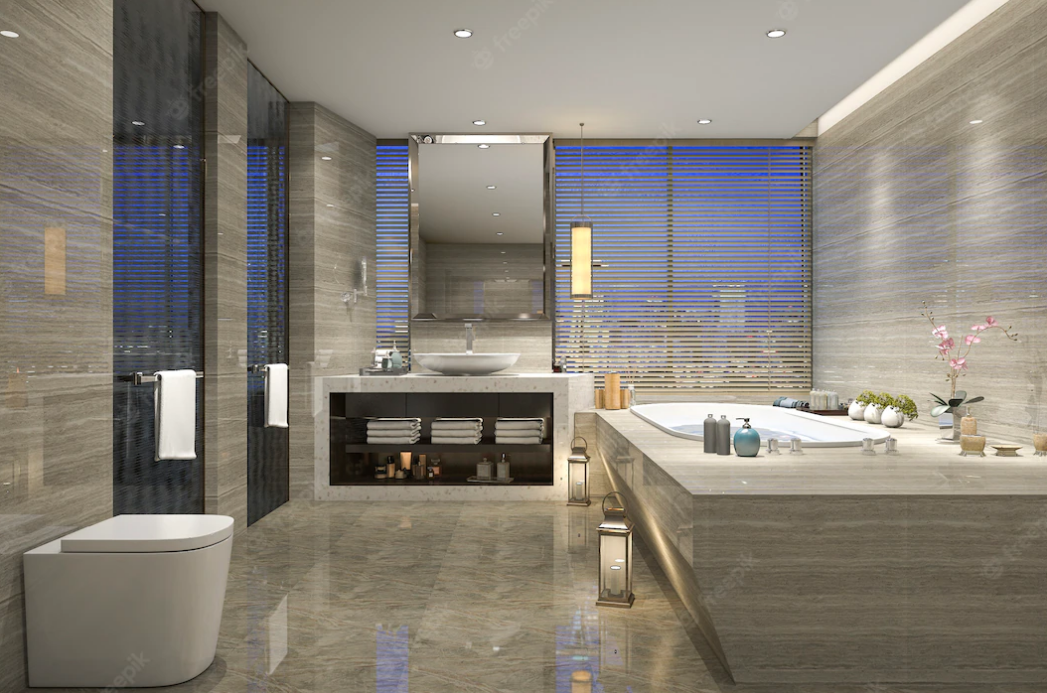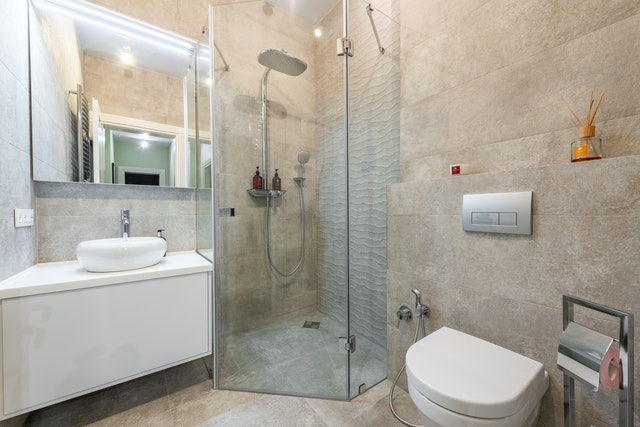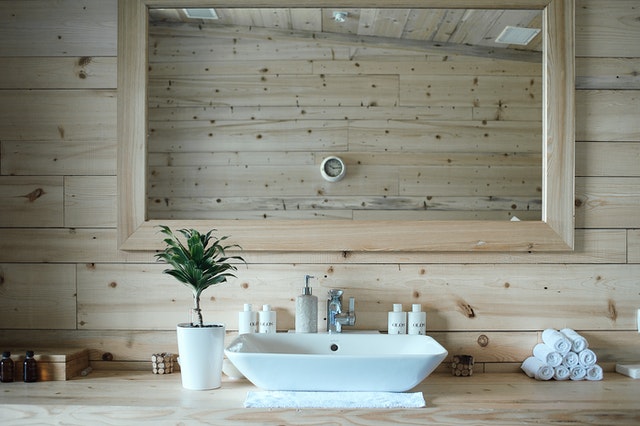This is an excerpt from the Book called “Bathrooms a Sunset Design Guide“. Continue reading to learn more about Bathroom Flooring at a glance, thanks to the author.
Ceramic Tile
- Pros: Broad range of sizes, shapes, and colors; durable; water resistant
- Cons: Must choose styles with enough strength for floors; can be slippery; cold underfoot; grout is high maintenance
- Price: $-$$
- Installation: DIY friendly; can be installed over existing floor if smooth and stable
- Green Issues: Look for tiles made of recycled materials, or for salvaged or surplus tiles that would otherwise go to waste
Porcelain Tile
- Pros: Can mimic the look of stone; strong; water resistant
- Cons: Cold underfoot; grout is high maintenance
- Price: $-$$
- Installation: Installs like ceramic tile, but you’ll need a diamond-blade wet saw to cut through it
- Green Issues: More eco-friendly than natural stone
Glass Tile
- Pros: Stylish; unique; beautiful color palette
- Cons: Must choose styles with enough strength and slip resistance for floors (either mosaic or a textured finish); grout is high maintenance
- Price: $$-$$$
- Installation: Use smooth, white thinset if tiles don’t have a solid sheet backing; otherwise you’ll see mortar through the tiles
- Green Issues: Look for tiles made of recycled glass
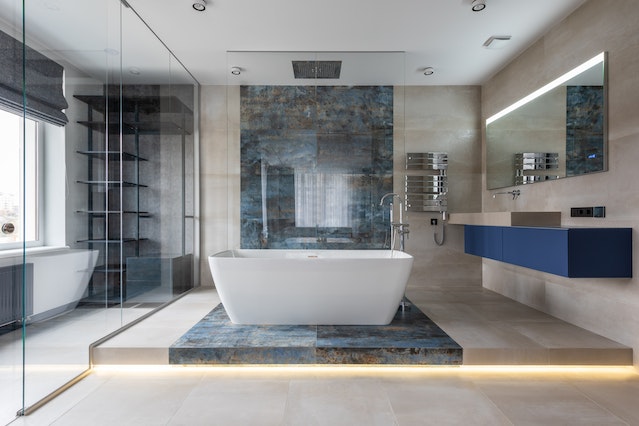
Stone
- Pros: Luxurious; range of colors and pattern
- Cons: Color and veining can vary from what you see in the showroom; heavy; cold under foot; must be resealed regularly
- Price: $$-$$$
- Installation: Make sure subfloor is strong enough to handle the weight
- Green Issues: Most varieties are shipped in from overseas, contributing to carbon emissions; choose one that’s quarried close to home
Concrete
- Pros: Can be stamped, textured, and color easy to clean
- Cons: Cold and hard underfoot (but can warmed up with a radiant-heat systems be resealed regularly
- Price: $$-$$$
- Installation: Hire an experienced contractor to pour a solid concrete floor; concrete tiles install like ceramic but should be sealed before installation
- Green Issues: Consider substituting some of the Portland cement with fly ash; use recycled aggregates
Terrazzo
- Pros: Durable; waterproof; tiles with resin binder don’t need to be resealed
- Cons: Heavy; cold and hard underfoot
- Price: $$-$$$
- Installation: Tiles install like any others; if poured in place, require an experienced professional
- Green Issues: Choose varieties that contain pre-and post-consumer recycled glass or other recycled materials rather than stone

Bamboo
- Pros: Looks similar to hardwood but is less expensive; can be sanded and refinished several times
- Cons: Limited color choices; must be resealed regularly to avoid water damage
- Price: $-$$
- Installation: Installs just like hardwood
- Green Issues: Imported from Asia (carbon emissions issues); some varieties contain formaldehyde adhesives that offgas
Wood
- Pros: Wide variety of colors, grains, and plank widths; soft and warm underfoot; can be sanded and refinished several times
- Cons: Must be resealed regularly to avoid water damage; can crack and buckle if bathroom is allowed to become too steamy on a regular basis
- Price: $$-$$$
- Installation: Available as a nail-down, glue-down, or floating floor; installation best left to a professional
- Green Issues: Use water-bases, low-VOC (volatile organic compound) stains and finishes; buy Forest Stewardship Council (FSC)-certified or reclaimed wood flooring
Laminate
- Pros: Looks similar to hardwood, ceramic, or stone but can be less expensive
- Cons: Can’t be refinished
- Price: $-$$
- Installation: Challenging DIY installation; floats over existing subfloor
- Green Issues: Look for manufacturers that have FSC-certified or recycled-content fiberboard cores; avoid those that contain formaldehyde adhesives that offgas

Linoleum
- Pros: Wide variety of colors; made of natural materials; durable; biodegradable; warm and soft underfoot
- Cons: Linseed oil in linoleum gives off a slight odor that some people find objectionable (decreases over time); must be resealed regularly
- Price: $-$$
- Installation: DIY friendly
- Green Issues: A wholly green material, from cradle to grave, although it is currently manufactured only in Europe (transportation emissions issues)
Vinyl
- Pros: Warm and soft underfoot; doesn’t need to be resealed
- Cons: Damaged tiles will need to be replaced
- Price: $
- Installation: DIY friendly
- Green Issues: Made of PVC (polyvinyl chloride), which has serious environmental and health issues
Cork
- Pros: Warm and soft underfoot; resists denting; has insulating qualities
- Cons: Must be resealed regularly
- Price: $-$$
- Installation: DIY friendly
- Green Issues: Uses a renewable and preconsumer waste material; choose manufacturers that don’t use formaldehyde adhesives and do use no-VOC finishes
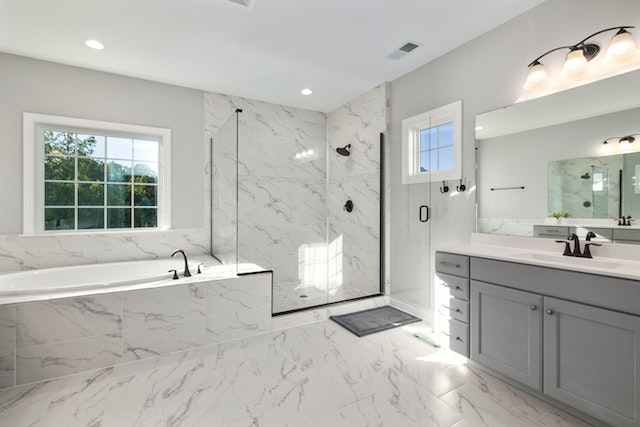
Rubber
- Pros: Durable; water and slip resistant
- Cons: Certain types made with recycled tires have an odor; some styles are more suited to commercial and outdoor installations
- Price: $-$$
- Installation: DIY friendly
- Green Issues: Choose ones that are made with recycled and renewable materials that do not offgas
Carpet
- Pros: Wide variety of colors and textures; soft and warm underfoot
- Cons: Hard to keep clean; not recommended for moist areas
- Price: $-$$
- Installation: Wall-to-wall requires professional installation
- Green Issues: Choose carpets made of natural materials like wool, or that contain recycled material
